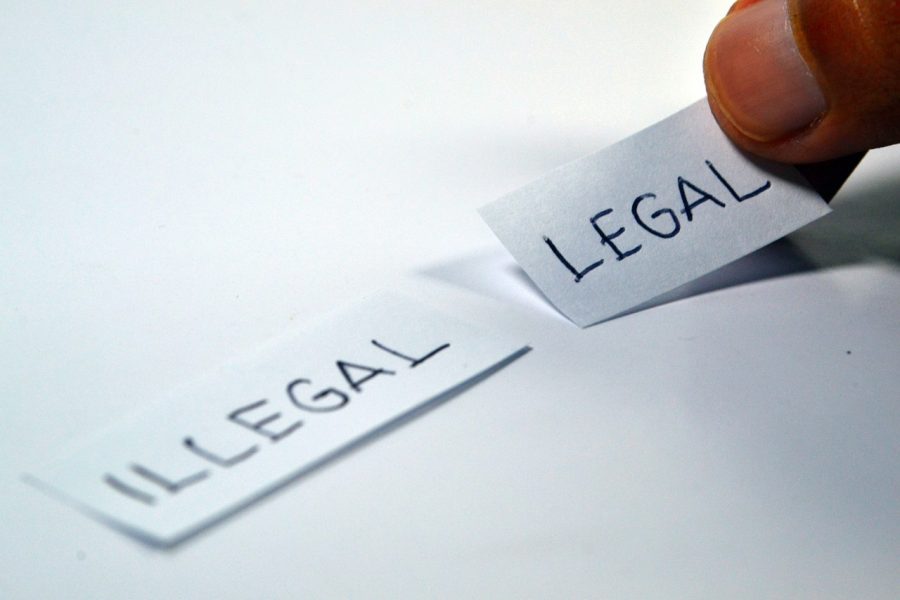Chavez: Consider the Contributing Factors to Criminal Behavior
September 7, 2019
The American criminal justice system needs a complete overhaul, as does negative societal attitudes towards people who commit crime and the stigmatizing language used to describe them. Whether it is used consciously or subconsciously, language can cause damage and dehumanization.
The word “criminal” is stigmatizing, isolating and relative. What is defined as criminal behavior in one state may be perfectly legal in another. Many laws in this country’s past have had to be reviewed and abolished because they created so much inherent discrimination and exploitation in regard to criminality. Remnants of these harmful ideals still linger in the justice system today.
There are many examples of the racial and class-based inequities that are the result of the current system. Sen. Elizabeth Warren has discussed this during her presidential campaign, referencing the four words etched above the Supreme Court — Equal Justice Under Law. In a Medium post outlining her ideas for comprehensive reform, she said, “It’s not equal justice when a kid with an ounce of pot can get thrown in jail while a bank executive who launders money for a drug cartel can get a bonus.”
Sen. Bernie Sanders’ campaign has also released a list of criminal justice reforms determined to secure “Justice and Safety for All”. It touches on all of the points Warren has made — including abolishing private prisons, ending the war on drugs and cash bail requirements, changing policing procedures and ensuring due process for all Americans.
Warren framed the idea as a new way to think about public safety. In her post, she supported moving away from “a punitive system and investing in evidence-based approaches that address the underlying drivers of violence and crime.” By getting to the root of the problem, it is more likely that it can be prevented. If a person has access to housing, education, healthcare and social support, they’re less likely to resort to crime.
The word “criminal” paints a vague, threatening picture of who a person is supposed to be, yet most crimes committed are non-violent and done by people who are not pathologically inclined to do so. A large percentage of the prison population have drug-related offenses. Many suffer from substance use disorder and mental health conditions, which are triggered or exacerbated by their environment. The majority live in poverty, before and after their time in the system. Crime does not happen in a vacuum — it is a response to deeper issues that should be met with compassion, not harsh punishment.
Awareness is the first step to enacting change. A good start is noticing what words you personally use to describe crime and who you think commits it. Think about your perspective on popular American outlaw figures like Jesse James or Bonnie and Clyde, and the countless movies that glamorize organized crime and bank heists. Consider how media outlets talk about “gangsters,” “thugs,” or “drug dealers” and what racially-coded imagery they use.
Then, support legislation that reduces stigma and puts the focus on public health and safety. In 2015, Utah passed the Justice Reinvestment Initiative in response to the state’s rapid prison population growth. The initiative has many goals, including efforts to “focus prison beds on serious and violent offenders … improve and expand re-entry and treatment services … match resources to offender’s needs … [and to] ensure oversight and accountability.”
Salt Lake County District Attorney Sim Gill has “collaborated on the creation and implementation of various therapeutic justice programs including Mental Health Court, Veterans Court, Salt Lake City Domestic Violence Court and Misdemeanor Drug Court.” These specialty courts are programs that aim to reduce recidivism and divert people away from detention centers. They offer a variety of resources to individuals in the justice system, and the goal is to make incarceration a last resort. A down-side to these courts is the process usually requires a guilty plea from defendants.
In order to reduce the prison population — the United States has more incarcerated people than any other country in the world — major changes must be made, not just within the existing structure, but to the very structure itself. Therapeutic justice and restorative justice are alternatives to the predominantly punitive system the U.S. currently operates under.
Leading up to the 2020 election, the American people have an opportunity every day to educate themselves about presidential and local elections. Prosecutors often run uncontested. When a prosecutor continually encourages plea deals without regard for any other circumstances, it perpetuates the cycle of punishment and incarceration. Once marginalized and poor people are in the system, the system does a good job of keeping them there.
Voting is a significant way to make a change as a citizen to our society. Another impactful change you can make is to be conscious of your interpersonal communication with those around you. Be mindful of the language you use when discussing socio-political issues like criminal justice reform and immigration.
There is a human being at the other end of your vocalized opinions, and they could be dealing with any number of circumstances that are making it difficult to simply survive. Using dehumanizing language, unwillingness to understand the larger context of a person’s life creates distance between members of society when what we truly crave is connection. Before reimagining the whole punitive justice system in America, we must first reimagine the language that circumscribes that system.








